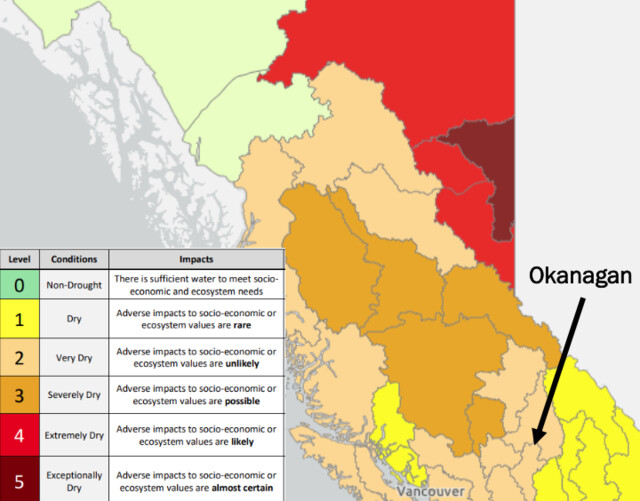The Okanagan region in British Columbia has officially moved to drought level 2, indicating a very dry summer ahead. This decision was made by the province’s River Forecast Centre, in collaboration with the Ministry of Forests, Lands, Natural Resource Operations and Rural Development.
According to the River Forecast Centre, the Okanagan region has experienced below-normal precipitation levels since the beginning of the year. This, combined with above-average temperatures, has resulted in a significant decrease in water supply. As a result, the region has been classified as “very dry” on the provincial drought levels scale.
This move to drought level 2 means that water users in the Okanagan region are being asked to voluntarily reduce their water consumption by 20%. This includes both residential and agricultural users, as well as industrial and commercial operations. The goal is to conserve water and ensure that there is enough supply for essential needs, such as drinking water and firefighting.
The province is also urging residents to be mindful of their water usage and to adopt water-saving practices, such as fixing leaks and using water-efficient appliances. In addition, the government is working closely with local water suppliers to monitor and manage water supplies in the region.
This is not the first time the Okanagan region has experienced drought conditions. In fact, the province has been monitoring the region’s water supply since 2015, when it was hit with one of the worst droughts in recent history. Since then, the government has implemented various measures to improve water management and conservation in the region.
While the move to drought level 2 is concerning, the province is confident that with the cooperation of residents and businesses, the region can successfully navigate through this dry spell. The River Forecast Centre will continue to monitor the situation and provide updates as needed.
In the meantime, the government is reminding everyone to be mindful of their water usage and to do their part in conserving this precious resource. By working together, we can ensure that the Okanagan region has enough water to sustain us through the summer months.




